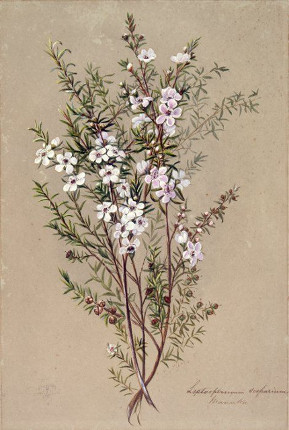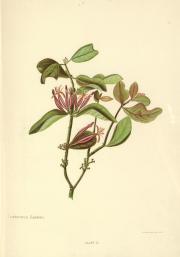Georgina Hetley

Botanical artist (1832-1898)

Artist Georgina Hetley’s inspiration to paint botanical specimens came from an 1881 Auckland lecture by scientist Thomas Cheeseman. Hetley was a financially-secure widow and with some travel sponsorship could afford to journey around New Zealand painting wildflowers. Along the way, she saw much native habitat lost to burning and cultivation. Her painting of the native mistletoe Loranthus adamsii (left) is a valuable record for botanists today – it was collected extensively near Thames in 1880, but is now considered extinct.1
In 1886 Hetley travelled to London to find a publisher for her book Native Flowers of New Zealand and exhibit work at the important Colonial and Indian Exhibition. She also spent time working under eminent botanist Sir Joseph Hooker at Kew Gardens, a centre for scientific research. Her book included three pages of scientific dissections and was marketed with glowing letters of recommendation from New Zealand natural historians.2
Feature image: A branch of white manuka in flower and seed. Source: National Library of New Zealand
Second image: Native mistletoe Loranthus adamsii. Source: National Library of New Zealand
References:
1. Mary R. S. Creese and Thomas M. Creese, Ladies in the Laboratory III: South African, Australian, New Zealand, and Canadian Women in Science: Nineteenth and Early Twentieth Centuries (Scarecrow Press, 2010), p. 87.
2. Catherine Field-Dodgson, ‘In Full Bloom: Botanical Art and Flower Painting by Women in 1880s New Zealand’, 2003, p. 57, http://researcharchive.vuw.ac.nz/handle/10063/4681.
This profile is part of the series 150 Women in 150 Words that celebrates women’s contributions to expanding knowledge in New Zealand, running as part of our 150th Anniversary.
